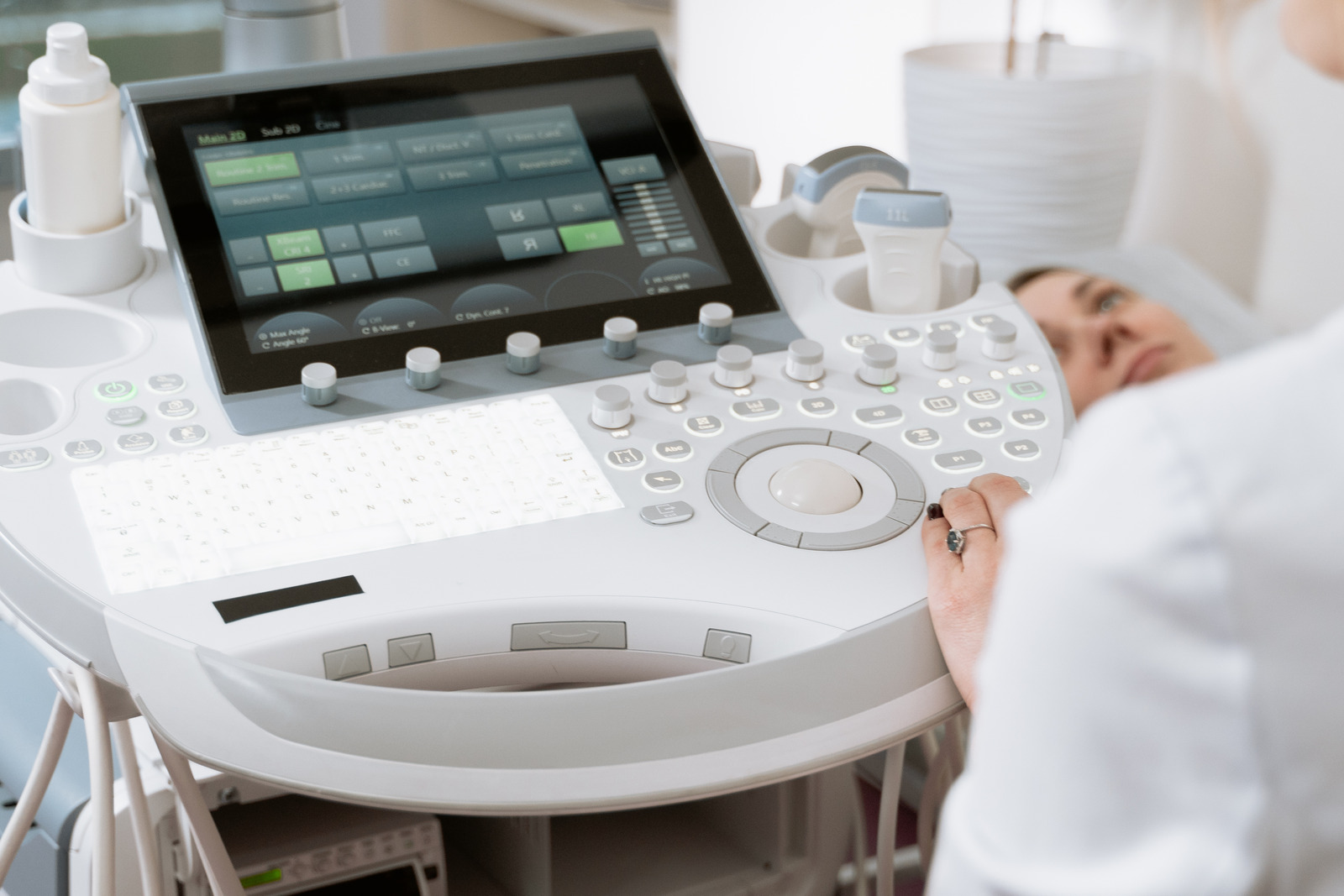The Critical Juncture for Healthcare Technology
Healthcare organisations are our first and last line of defense. In the face of infectious diseases and cancers, injuries and chronic illness, the medical sector stands with us through every crisis.
But with rising costs of treatment, breakthroughs in medical science, ever-growing patient expectations and the looming threat of new pandemics caused by climate change, how long can the healthcare industry afford to rely on increasingly outdated technology?
Relying on legacy Electronic Health Records (EHR) management software may seem like the more cost-effective choice, but the long-term costs of postponing digital modernisation threaten everything from quality of care to the overall financial viability of the provider.
Now more than ever, healthcare organisations need every available advantage — and it all starts with the right tools for the job. Strategic medical information systems transform providers of every size and specialisation for the future, empowering them to deliver improved care with enhanced operational efficiency and organisational resilience.
Discover what a modern EHR can do for your healthcare organisation below.
The Legacy EHR Burden
What is a Legacy EHR System?
Built on previous generations of technology, legacy Electronic Health Record (EHR) systems use outdated proprietary digital infrastructures.
Designed for only specific workflows and healthcare offerings, they are less adaptable than newer iterations, while vastly more costly to maintain and more vulnerable to cyberattacks.
Characteristics of Legacy EHRs
- Outdated User Interfaces (UIs): Legacy EHRs lack the attractive, intuitive design principles and accessibility features which have become standard in modern software.
- Fragmented Data Storage: Legacy EHRs compartmentalise operational, financial and patient information into separate digital locations known as ‘siloes’. This incurs dangerous inefficiencies where vital personal data can become inaccessible when it is needed for treatment.
- Limited API Support: Previous generations of EHR management systems struggle to integrate with more recent applications, creating a major barrier to communication between different medical technologies and healthcare organisations.
- High Cost of Ownership: Renewing usage rights to legacy EHR software often comes with a hefty price tag, forcing organisations to compromise in other areas — like training, recruitment and medical supply — simply to retain access to their digital systems.
- Difficulty with Updates and Upgrades: Yesteryear’s EHR systems are rigid by design, and do not readily incorporate patches, fixes or add-ons. Bugs and glitches go unresolved, further undermining operations and service quality.
- Poor Scalability: The modern healthcare landscape is larger and more dynamic than in previous generations, with a wider variety of treatments, facilities, insurance schemes and competitors. Medical organisations hamstrung by restrictive legacy technology struggle to respond to changes in demand.
- Vendor Lock-in: Given the low interoperability of legacy EHR infrastructures (and the associated barriers to data migration), many healthcare organisations find themselves confined to a single software vendor. This reduction in competition incentivises high prices and poor service, decreasing the value to the consumer while also limiting their purchasing options.
Costs of a Legacy EHR System
Outdated medical information systems cause major problems for healthcare organisations, incurring what analysts call ‘technical debt’: the financial liability (and operational issues) created by inefficient software unsuited to a modern context.
Inefficiency & Workflow Bottlenecks
Complicated and repetitive protocols make legacy EHR systems tedious and error-prone.
Simple tasks may demand multiple clicks, screens may require the same data to be manually re-entered, and workflows may rely on hard-copy workarounds — the inefficiencies of which only compound with the scale of patient intakes.
Cumbersome designs, redundant processes and the reliance on physical tasks waste clinician time, while needlessly burdening administrators and, most concerningly, delaying (and even impairing) patient care.
Financial Drain & Vendor Lock-in
Legacy EHR systems require routine renewal, incurring escalating licensing fees. Maintenance and support services are also more expensive, as technicians tend to be specialists with advanced training in proprietary software.
Moreover, given their rigid data architecture, legacy EHR systems do not easily allow data migration, preventing organisations from transferring data to superior modern alternatives.
Security Vulnerabilities & Compliance Risks
Cyber threats have advanced since the era of many outdated EHR systems, leaving medical organisations susceptible to incursive malware and ransomware.
The modern data landscape is increasingly regulated by the Health Insurance Portability and Accountability Act (HIPAA), the General Data Protection Regulation (GDPR), South Africa’s Protection of Personal Information Act (POPIA), and others. Organisations which fail to comply with the latest legislation risk major penalties, up to and including termination of service.
Limited Interoperability (Data Silos)
Modern healthcare technologies operate in seamless connectivity, coordinating the flow of information between a wide variety of actors within the medical sector.
Patient data is exchanged securely and instantly among labs, pharmacies, hospitals, medical specialists and telehealth platforms.
Older EHR systems create data silos which stagger these exchanges, requiring manual documentation that all too often results in incomplete patient views and fragmented, inferior care.
Clinician Burnout & Poor User Experience
High levels of repetitive, routine tasks accompany legacy EHRs, overwhelming clinicians who, over time, struggle to maintain the quality of their treatment. This strains staff morale, putting essential healthcare professionals at risk of burnout and endangering patients under their care.
Stifled Innovation
Built before the rise of artificial intelligence (AI), machine learning (ML) and advanced analytics, legacy systems fail to leverage the new generation of medical tech. Modern EHRs, by contrast, capitalise on the latest advancements to provide superior treatment efficiently.
The Core of Modern Healthcare: Primary Functions of the EHR
What are the Primary Functions of the EHR?
The importance of an EHR management software cannot be overstated, serving as the central digital repository for patient health information. It coordinates clinicians, administrators and data governance to ensure care is delivered safely and efficiently.
Essential Functions of a Modern EHR
Clinical Management
- Comprehensive Patient Data: Patient records include demographic details, medical history, medications, allergies, immunisations and diagnoses.
- Charting & Documentation: Clinicians can access SOAP notes, progress reports, vital signs and growth charts, as well as specific lab results to more accurately monitor patient wellbeing.
- Order Entry & Management: Prescriptions, lab tests, imaging and referrals are all viewable to authorised health providers, ensuring medical professionals share a common basis of understanding.
- Clinical Decision Support: Doctors, nurses and other healthcare professionals benefit from a range of assistive digital tools, including alerts for drug interactions, reminders for preventive care, and evidence-based guidelines for treatment strategies.
Workflow & Operations
The benefits of EHR systems are not limited quality of care alone. Modern EHRs streamline appointment scheduling, billing and revenue cycles, and cross-department communications, ensuring information is managed securely and efficiently at every step of the patient’s journey.
Data & Interoperability
Equipped with Health Information Exchange (HIE) capabilities, the latest EHRs seamlessly integrate with external systems like labs, pharmacies and telehealth platforms, while adhering to EHR interoperability standards, such as those established by Fast Healthcare Interoperability Resources (FHIR) and Health Level 7 (HL7).
Patient Engagement & Access
- Patient Portals: With modern EHRs, patients can access digital platforms to book appointments, renew prescriptions, view lab test results and communicate securely with their healthcare professionals.
- Telehealth Integration: Remote consultation facilities allow patients to receive medical advice by text, phone calls or video conferences, making healthcare more accessible to patients with disabilities, financial constraints or transport limitations.
- Clinical Coding & Billing Support: Modern EHRs speed up payment processing by allowing patients to settle outstanding fees remotely.
Security & Compliance
- Robust Access Controls and Audit Trails: The latest EHRs use advanced authentication to protect sensitive data, while keeping digital actions transparent.
- Data Encryption: Integrated state-of-the-art encryption tools prevent catastrophic ransomware incursions.
- Compliance Features for Regulatory Requirements: Newer EHRs are designed with regulatory frameworks in mind, streamlining compliance measures for HIPAA, POPIA and GDPR standards.
| Category | Key Functions | Benefits |
| Clinical Excellence | Patient charting, e-prescribing, decision support, lab integration | Improved patient safety, better diagnostics, personaliszed care |
| Operational Efficiency | Scheduling, billing support, task management, clinical coding | Streamlined workflows, reduced administrative burden, optimizsed revenue |
| Seamless Interoperability | Data exchange with external systems, adherence to standards (FHIR) | Holistic patient view, coordinated care, reduced data silos |
| Patient Empowerment | Patient portals, telehealth integration | Enhanced patient engagement, improved access to care, greater convenience |
| Data Security & Privacy | Advanced encryption, access controls, audit trails, regulatory compliance (e.g., HIPAA, POPIA) | Reduced risk of breaches, enhanced trust, legal adherence |
Modernising Through Healthcare Software Development
Why Modernise Now? The Imperative for Change:
- Evolving Patient Expectations: Healthcare consumers demand holistic, personalised care that is sensitive to all aspects of their wellbeing, coordinated across multiple providers and customised to their preferences. Rigid EHR systems, by contrast, tend to standardise care delivery.
- Regulatory Pressures: Increasingly stringent requirements for data privacy and interoperability compel healthcare organisations to take proactive cybersecurity measures which surpass the capabilities of legacy EHRs.
- Rapid Technological Advancements: The speed of innovations in automation, networks and cloud computing, as well as increasingly specialised medical instruments, quickly renders legacy systems quickly obsolete.
- Competitive Advantage: Organisations with modern systems can efficiently offer superior care, making them the more attractive choice in an increasingly crowded marketplace.
- Post-Pandemic Realities: Covid-19 alerted healthcare providers and policymakers to the increased risks of global public health crises in the age of climate change. Adaptable, high-integrity medical systems ensure organisations are equipped to deliver quality treatment fast and at scale.
The Role of Healthcare Software Development
Custom EHR Development:
- Building Tailored Solutions: Bespoke software solutions are optimised to your organisation’s priorities, catering to its unique workflows, specialties, and needs.
- Scalability & Flexibility: Custom software agilely grows with your organisation, seamlessly integrating new features, users and networks with changes in demand.
- Security & Compliance by Design: In the era of cybercrime, custom healthcare technologies offer the best protection, embedding the latest cybersecurity measures to ensure the safety of patient data as well as the organisation’s adherence to regulatory requirements.
- Improved User Adoption: Developers respond to direct clinician feedback throughout production, building intuitive interfaces which put user experience first.
- Long-term Strategic Investment: Optimised systems generate significant returns by enhancing operational efficiency, improving care quality and service capacity, while accelerating innovation.
EHR Integration Services:
- Breaking Down Data Silos: Modern EHRs connect currently disparate systems — such as those used by insurers, labs, pharmacies and telehealth platforms — for rapid and accurate communication between healthcare providers.
- Leveraging Modern APIs: Real-time data exchange is seamless with advances in medical software development, allowing a wide variety of technologies to interface without interruption or error.
- Adherence to Interoperability Standards: International standards like FHI and HL7 promote compatibility between medical technologies now and in the future and serve as a guide to software developers in the healthcare industry.
Legacy System Modernisation & Migration:
EHR implementation requires careful planning to reduce impacts on workflows.
- Phased Approach: By transforming portions of a digital infrastructure sequentially, healthcare organisations can minimise disruption to their normal operations, ensuring treatment standards are upheld and routine functions proceed uninterrupted.
- Secure Data Migration Strategies: Proactive measures to preserve data integrity and maintain the safety of historical patient information eliminate the risk of corruption or incursion.
- Re-platforming & Re-architecting: Updating underlying technology for enhanced performance and security.
JustSolve’s Expertise in Healthcare Software Development
Turning roadblocks into runways requires specialist expertise.
At JustSolve, we understand the unique complexities of the healthcare industry and leverage our deep knowledge in healthcare software development to build robust, secure, and future-proof solutions.
From custom EHR development to seamless integrations, we empower healthcare providers to achieve their digital transformation goals.
Learn more about how JustSolve empowers healthcare innovation.
The Future of Electronic Health Records: An Intelligent Runway
What is the Future of Electronic Health Records?
Cutting-edge EHRs provide interoperable, patient-centric platforms built for more than mere record-keeping. These robust systems flexibly integrate predictive and preventive analytical tools to enhance decision-making, personalise care and empower both clinicians and patients, while seamlessly accelerating communications between entities throughout the healthcare system at large.
Key Innovations Shaping the Future of EHRs
As technology continues to advance, modern EHRs stand to benefit from state-of-the-art capabilities like:
- AI & Machine Learning Integration: Emerging EHRs incorporate advanced algorithms which can estimate the likelihood of disease outbreaks and development of patient symptomology using predictive analytics. This supports clinician decision-making, guiding treatment personalisation.
- Advanced Interoperability & Semantic Interoperability: Beyond simply exchanging data, newer EHRs aim to facilitate more meaningful understanding between systems, creating nationwide information networks.
- Enhanced Patient Engagement & Personalisation: Next-generation EHRs will continue to prioritise patient agency through AI-driven self-service portals, and extend remote monitoring integration to inform medical providers of health status updates in real-time. Combined with virtual care platforms, the efforts contribute to the overall personalisation of medical treatment expected to define the future of healthcare.
- Blockchain for Security & Data Integrity (Emerging): As cybercrime levels continue to rise, advanced algorithmic security systems like blockchain may play a decisive role in ensuring patient records are immutable and consensual.
- Cloud-Native Architectures: Modern EHRs rely on highly efficient cloud networks, which flexibly scale to meet changing demand, rapidly deploying new features while keeping rollout costs to a minimum.
- Focus on Clinician Experience: Minimising clinician burnout is essential to a well-functioning healthcare system. Leading EHRs come equipped with intuitive, voice-enabled, and context-aware interfaces that eliminate tedium.
- Genomic Data Integration: To further personalise care for optimal outcomes, EHRs may come to incorporate patients’ genetic information.
| Feature Area | Current State (Good EHR) | Future State (Intelligent EHR) |
| Data Insights | Basic reporting, retrospective analysis | Predictive analytics, prescriptive recommendations, real-time dashboards |
| Interoperability | Standardised data exchange (HL7, FHIR) | Semantic interoperability, seamless data flow across global health networks |
| Patient Engagement | Basic portals, appointment booking | AI-powered personalised health coaches, remote monitoring, proactive care reminders |
| Clinician Support | Decision support alerts | AI-driven diagnostic assistance, automated documentation, voice-activated charting, burnout reduction tools |
| Technology Platform | On-premise, monolithic architecture | Cloud-native, microservices-based, highly scalable, secure |
Table: From Current to Future EHR Capabilities
Charting Your Course to a Digital Healthcare Future
Turn your roadblock into a runway with a modern EHR system, the forward-thinking choice for long-term organisational success and quality patient care.
While legacy systems chain organisations to costly, cumbersome, siloed applications, new iterations transform your organisation’s digital infrastructure for increased efficiency, safety and innovation.
Book a consultation with JustSolve today, a leading custom EHR software development company, and discover what investing in a tailored solution can do for your organisation — and your patients.







